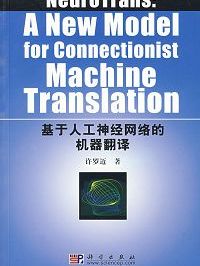New Translation Technology Shown in Berlin — and Mountain View
Donald A. DePalma 12 June 2009
Filed under (Translation Technologies)
To the surprise of many who predicted a small turnout due to slashed travel budgets, this week’s Localization World in Berlin actually drew 463 delegates. The conference sessions focused on “Know-how for Global Success.” According to a presentation by Common Sense Advisory, one driver of success would be the addition of a language component to corporate intranets in support of knowledge management — we discussed these heady topics as “crowdsourcing inside the firewall.”
Out in the exhibition hall, language software vendors did not disappoint as they introduced or demonstrated new versions. However, the biggest news in translation technology originated in Mountain View, California as Google fired its latest salvo in language technology.
Data testing, preparation, and quality. Asia Online introduced its free Language Studio Lite, a data preparation and quality checking tool. Brandt Technologies showed off its multi-target Shadow automated testing tool, highlighting more activity in the sector by specialty vendors such as itself and Multilingual QA.
Translation request broker. Clay Tablet announced the latest version of its translation request broker, including features that enable it to manage and synchronize multilingual assets among disparate content stores, a feature that we flagged as critical to federating multi-source translation environments. Across showcased the recent release of its V5 Language Server, along with partner integrations.
Translation memory. The conference highlighted a lot of activity in the translation memory (TM) sector, with the introduction of SDL Trados Studio 2009 (summary: innovative, faster, easier, more productive, higher quality), the showing of STAR Transit NXT (summary: better support for a translator’s business needs and innovative features), and the previewing of Atril Déjà Vu (summary: functional and user interface (UI) improvements, new features, better SQL support, and Trados 2009 compatibility).
Machine translation (MT). SYSTRAN displayed its hybrid rules-plus-statistical MT engine, fulfilling one of our 2006 predictions about the development of such technology. In a related vein, MultiCorpora demonstrated its enhanced word alignment technology and tight integration with SYSTRAN. Lucy Software showed off its LT engine and talked about its focus on globalizing SAP applications, a “niche” that comprises 86,000 SAP customers in 120 countries.
Software and web localization. Old and new players paid more attention to the difficulties of localizing software and websites. SDL Passolo unveiled its latest version (summary: improved, faster, future-ready), TDC’s Alchemy Software demonstrated Catalyst 8.0 (summary: more languages, performance, productivity, usability, standards, features). Andrä AG linked to Typo3 to show how it can visually update a website in context. Start-up RIGI revealed a working prototype of new software for visual web localization. The localization and internationalization sector is getting more vendor attention, as witnessed by these products and other offerings such as Lingoport’s Globalyzer 3.0.
And then there was Google. While it did not tout its wares in Berlin, it caused quite a stir on the last day of the conference among computer-aided translation (CAT) and MT software vendors. Thousands of miles away, the company had quietly introduced major enhancements to Google Translator Toolkit, its machine translation and translator environment offering.
What inspired vigorous conversation among TAUS and the CAT and MT suppliers were cloud-based additions to Google’s tool, including post-editing of MT output, translation memory, multilingual glossaries, and collaboration, all delivered in a Google Docs-style interface. The company also pushed the notion of publishing translations to Wikipedia or its own Knol, a project that it appropriated from Asia Online’s playbook. Along with other free or open-source solutions such as Linguee’s “the web as dictionary” and Moses MT, the translation-in-the-cloud offerings have the potential to reshape the language technology sector. Stay tuned. With so many product updates hitting the market and new entrants like Google raising the stakes, we anticipate the beginning of a new stage in language technology.
Company: Across, Alchemy, Andrä, Atril, Brandt, Google, Lingoport, Linguee, Localization World, Lucy Software, Moses, MultiCorpora, Multilingual QA, Passolo, RIGI, SDL, STAR, SYSTRAN, TAUS, Typo3
Symbol: GOOG, SDL
See related research: Translation Management Takes Flight
